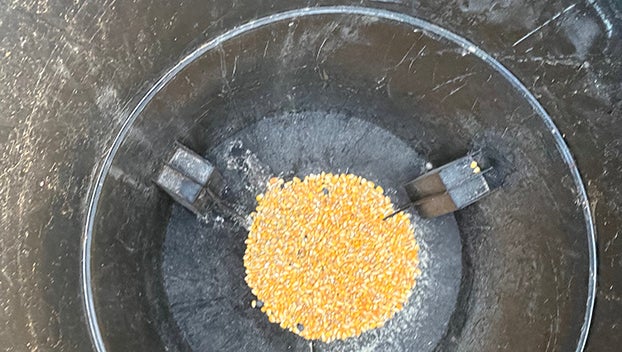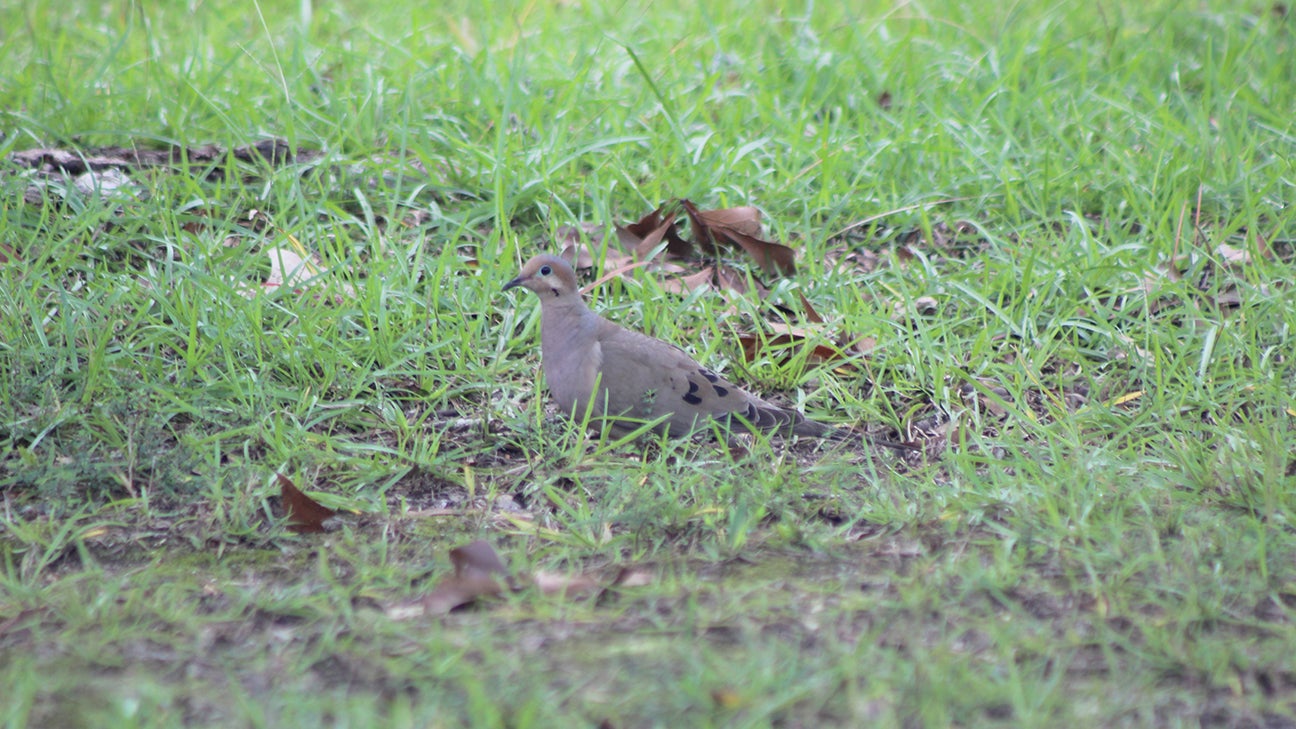Ditch the feeders for habitat management, better deer movement
Published 3:54 pm Tuesday, October 10, 2023

- A small amount of corn left in a feeder in Lincoln County. Proper habitat management is more cost effective than filling a feeder and can help increase daytime deer movement. (Hunter Cloud | The Daily Leader)
BROOKHAVEN — Deer season is here and so is the temptation to want to fill feeders to the brim with corn and protein feed. Research from the National Deer Association, MDWFP and MSU Deer Lab show there is a better way to feed the deer herd and spend your resources.
Supplemental feed can be a controversial topic. There is a fine line between baiting with corn piles and “feeding,” your deer herd with feeders spread out across the property. Hunters may want to consider a few things that effect management and hunting.
The National Deer Association found protein feed bought from the store costs a hunter or land manager $0.50 a pound in forage and $2.50 a pound in protein. Warm season food plots yielded $0.04 a pound in forage and $0.13 a pound in protein. Prescribed fire was the most cost effective with an average cost of $0.02 a pound in forage and $0.09 a pound in protein with the plants regenerated from fire. It is more cost effective to manage habitat for deer rather than spending money and energy filling feeders.
Cool season food plots will be needed this year to help carry deer through the winter stress periods as acorn production is down due to the drought and a late freeze in the spring. Corn and protein feed could help deer in the winter stress period this year but again one must consider a couple other factors in addition to cost.
Deadly hub
Research conducted by Mississippi State University’s Deer Lab found 40 percent of visitors to feeders were raccoons. Deer made up 25 percent of the visitors and wild turkeys, hogs and other small animals made up the rest. Raccoons are nest predators for turkeys and a corn feeder only exacerbates the problem by congregating raccoons, coyotes and bobcats in an area where their prey visits.
Hunters in Mississippi are often interested in pursuing deer and turkeys.
Disease is likely to spread at these artificial congregation sites between an increase in disease carrying ticks and the potential for Chronic Wasting Disease prions to spread.
On the move
Feeders have behavioral effects on deer as well. MSU Deer Lab used GPS collars to track the movements of bucks 3.5 to 5.5+ years old and found some fascinating results across 78,000 acres of cooperative landowners.
Bucks that used feeders to eat traveled shorter distances, bedded down more, moved less often and were more active at night. Food plot bucks moved more during the day. Of course, more daylight movement means hunters have a better chance of seeing and harvesting a deer.
Assistant Deer Program Director Kamen Campbell said there have been several studies done on supplemental feeding impacts on wildlife. He added hunters might want to hunt different stands as well to find better success.
“Every research study that has looked at supplemental feeding shows deer harvest decreases,” Campbell said. “The deer move less during daylight hours and less time they are available. in Louisiana’s Tensas parish. They collect harvest data at county level with mandatory tagging. They set the parish record for number of deer harvested a couple of years ago. Chronic Wasting Disease caused supplemental feeding to be banned there last year and hunters shot even more deer. One Oklahoma research project with MSU looked at hunter data on when they sat in the stand. The day a property was hunted deer were not affected, but the day after, deer avoided the area. The avoidance dropped 25 percent per day. After five days they are back to normal.”





